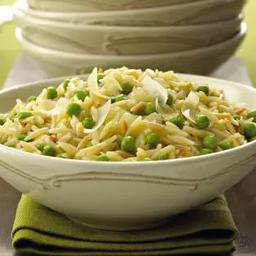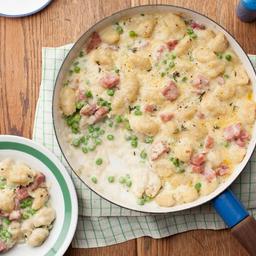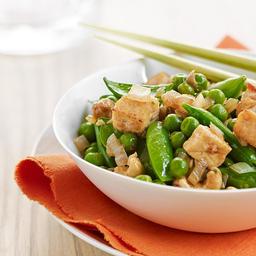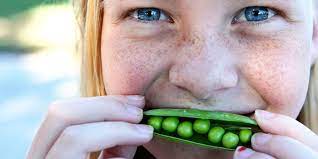
GO GET ‘EM SWEET-PEA!
We often started our daughter’s field hockey game hearing this battle cry from one of her teammate’s mothers. This petite woman would yell across the field to her daughter, Julie, to encourage her to play a good game (and win!) What was so funny, was the addition of the “sweet-pea” endearment.
The nickname fit this girl perfectly. Just like the sweet pea flower and editable peas, off the field, Julie was sweet, gentle, easy to get-a-long with and soft spoken. But put her on the field and she showed her strength, resilience, intelligence, focus and skill. She was a small but mighty powerhouse, just like peas.
Peas are tougher than one might think. Despite looking tender, this early spring planted legume is a hardy grower in less than kind weather conditions. They fight for the sunlight and then produce delicious, sweet peas that pack a powerful nutritional win. The magnesium, potassium and calcium as well as the antioxidant rich nutrients like vitamin C, protect and support cardiovascular function, help keep skin and hair healthy, and sustain healthy muscles and nerves (important for field hockey players!) Peas are a good food source for diabetics since they are high in fiber and are ranked low on the glycemic index. A low glycemic index means the carbohydrates are slowly absorbed causing fewer spikes in blood sugar. Bonus, a cup of peas is only 118 calories!
The three main types of peas that we eat are snap peas, snow peas and shelling peas. There are many varieties of each with names such as Sugar Ann, Mammoth Melting Sugar, Little Marvel and Green Arrow. Yum! Sounds tasty.
Snap Peas are rounded and look like you should shell them, but in fact you can eat them whole. The edible pods are sweet and juicy. They are the earliest to harvest, maturing in under 60 days. The kids (and this big kid) get excited picking and crunching on a pod or two right from the garden. I like to use them raw for crudité platters with this easy-to-make dip. Unfortunately, this type of pea doesn’t freeze well so look for them in the produce section.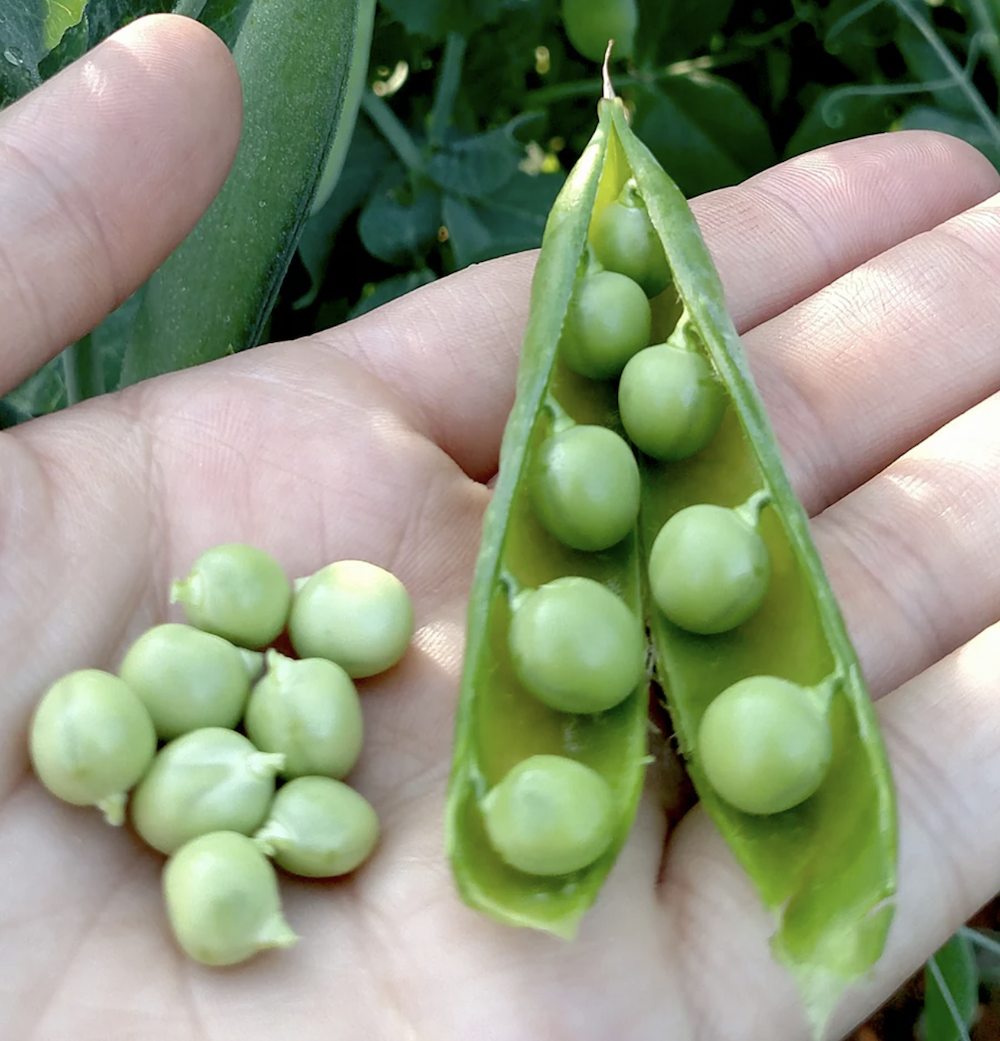
Snow Peas are often used in stir fry recipes and Asian inspired dishes. Not as sweet as snap peas, snow peas are also eaten whole. The reason they are called snow peas is because they are so hardy when growing they can withstand snow and cold. Enjoy snow peas raw or cooked from fresh (sweetest) or frozen.
Shelling Peas are the most common found in stores since they are easily frozen and canned. If you grow peas or can find freshly picked peas, you are extra fortunate. Teaching your kids to love just-shelled peas that are sweet, and tender is a joy. This is not to say frozen peas aren’t fabulous too! I add them to everything from casseroles to fresh green salads. There is no such thing as unused leftover peas because they are so easy to throw into a pot of soup or even in my morning smoothie. I always have a bag of peas in the freezer.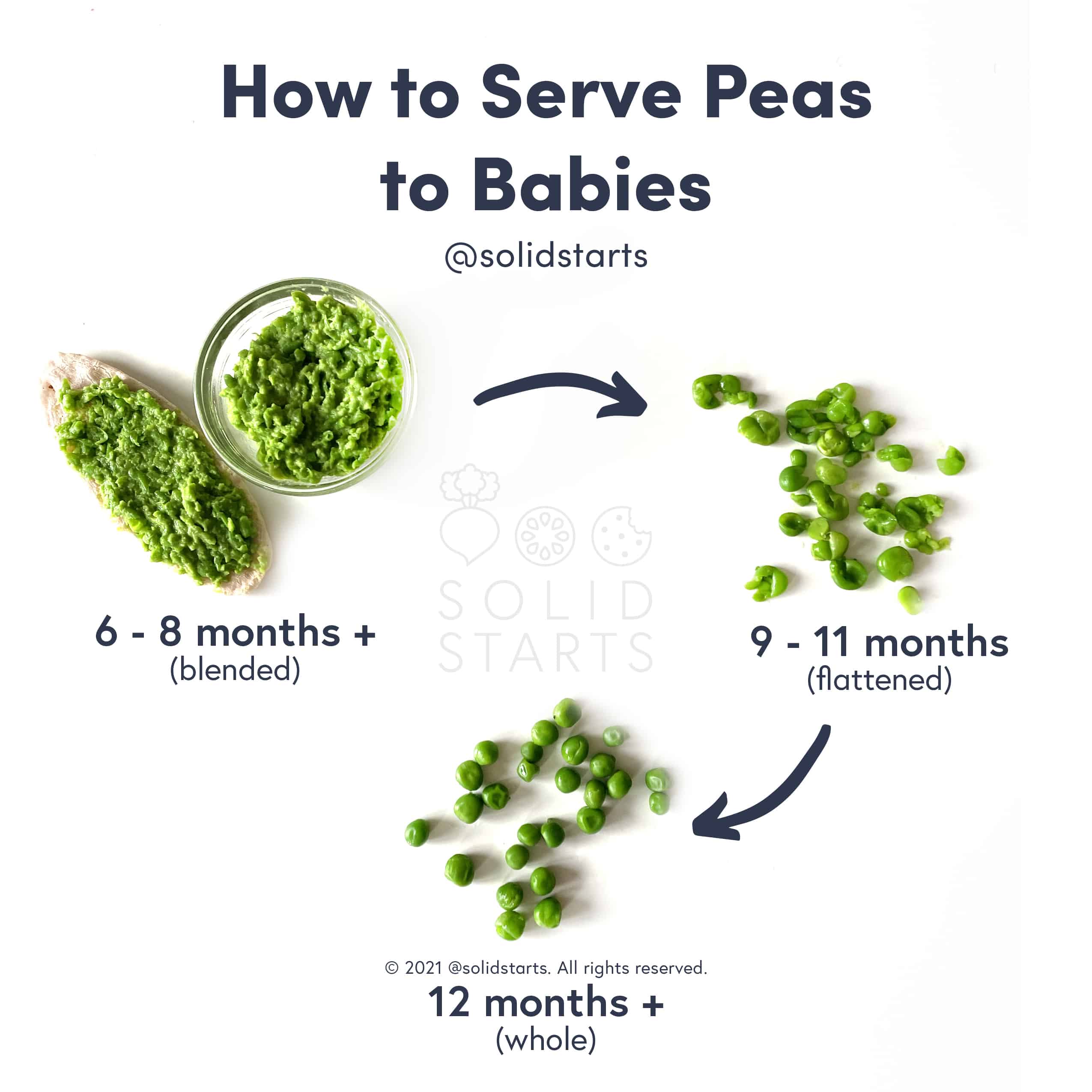
Teach your children to love peas as soon as they can have real food. Start them off with blended peas at 6-8 months and progress to smashed/flattened at 9 months and finally to whole peas at 12 months. Babies can practice their small motor skills by picking up yummy peas off their tray or holding the pea pod they are eating. It’s a mess but so fun and they will learn to love this healthy legume. And who knows… maybe grow up to be as strong and focused as Julie the Sweet-Pea at their spelling bee, piano recital or on the sports field.
According to legend, the phrase “green thumb” originated during the reign of King Edward I of England, who was fond of green peas and kept six serfs shelling them during the season. The serf who had the greenest thumb won a prize!
Pleasing Pea Recipes

